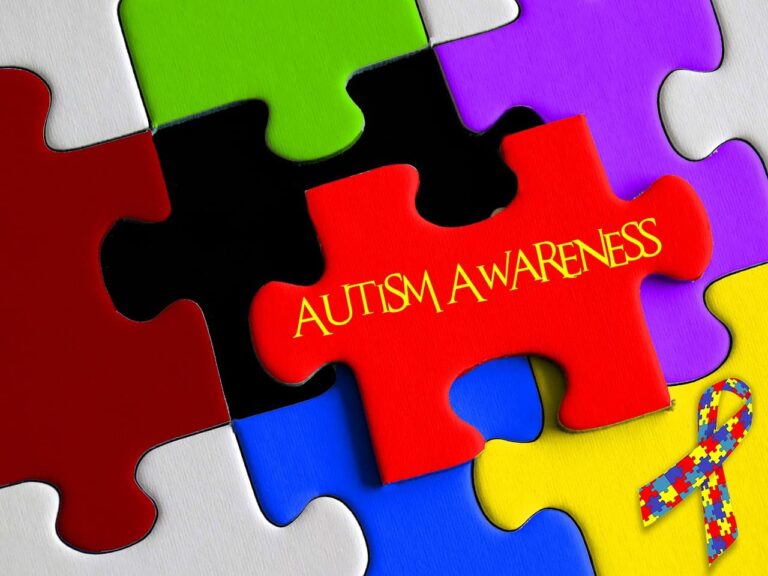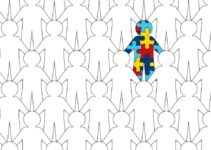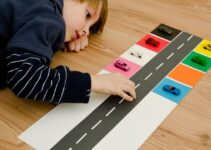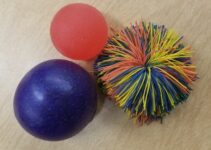When creating my very first classroom schedule, a concerned parent asked me, “Why do you have so much time devoted to play? I don’t want my child to come to school to play all day!”
At the time, being a first-year teacher and co-teaching with another teacher, I was never able to properly articulate why I structured the day in my classroom around play until I had a few more years of teaching and continued learning courses under my belt.
Now, as a mother myself and having many more years of experience, I have seen just how critical play is for a child’s development and to develop parent-child connections. Children with autism struggle most often with socialization and communication.
Many magical things can happen when a child plays that present teachable moments in both of these areas.
Table of Contents
Joint Attention: The Building Blocks of Play
First, let’s look at consider joint attention. Joint attention has been defined as the ability to share attention in relation to objects and other people. [1]
There are two types of joint attention: responding joint attention and initiating joint attention. What’s the first thing that happens when a baby is born?
First the baby looks at his or her mother when they’re eating this is an example of developing joint attention. As the weeks go on, the baby turns their head toward the sound of the mother’s voice. As this baby grows into a toddler, they may come when their mother calls them. These are examples of responding joint attention. [2]
When the interest of the child grows or they want to express their interest in an object or something they see, they may point for their mother or “social partner” (anyone they are responding to or engaging with) to see. This is an example of initiating joint attention.
These are the basic building blocks of both socialization and communication. As a Behavior Analyst, this is where I start when observing a child and writing a plan for developing their communication and socialization through play.
I ask myself the following questions: Is the child able to respond to their name? Are they able to track items when shown something? Do they respond to the command “look” or will they look when someone points? Can they somehow lead a familiar adult or another person to something they want?
Do they engage other children in play or merely play in the presence of others? Will they approach adults or children when playing? Will they tolerate their play being interrupted?
Responding joint attention skills are important because they can lead to following directions, understanding and answering questions, and imitation skills. Initiating joint attention can also lead to the child asking for desired items, commenting on the world around them, and engaging in back-and-forth conversations.
Activities for Different Stages of Development
The Verbal Behavior Milestones and Program Placement (VB-MAPP) has been a cornerstone in my practice developing goals for children starting at the age of 2 years old, the earliest a child can be diagnosed.
This assessment goes further into the social skills related to joint attention / social reciprocity, receptive and expressive language, group skills, play skills and many other areas of verbal behavior.
Many teachers, BCBAs, clinics have used this assessment because of the nuances of language that are broken down into 3 different developmental stages. [2]
The VB-MAPP breaks down the development age into three groups: 0-18 months, 18-30 months, and 30-48 months. I will use these age groups to outline the play skills that develop at different ages and some games and activities that can be used to develop those skills.
Activities for 0-18 Months:
Many parents want a list of games/activities they either purchase or have to make, but it doesn’t have to be this complicated. Just play!
- Play peek-a-boo: this helps in develop a cause and effect type play, increases joint attention and builds relationships between child and parent.
- Hide a toy they love to play with under a blanket and then remove it
- Use scarves or other movement-type item to gain their attention and have them track it visually
- Musical instruments/ toys: this gives a child the ability to understand the concepts of cause and effect. For example, when they push a button there is a sound that occurs.
- Put a toy they’re engaged with by your eyes and call their name to see if they look
Socialization / Play Skills Developing During This Time:
-
- manipulates and explores objects
- plays with different objects
- engages in cause-and-effect play
- tracks other people’s movement
- looks at other children or glances at them
- imitates behavior
- responds to a speaker’s voice
- responds to their name being called
Language Skills (in play) Developing During This Time:
- makes requests or somehow makes their needs known
- labels items
Activities for 18-30 Months:
- Turn-taking games:
- Pop-Up Pirate: this game helps children accept the unpredictable nature of some games and increases their abilities to take turns
- Candyland: encourages identifying themselves as a certain game piece which is part of imaginative and pretend play skills, it is also full of unpredictability which requires them to accept unexpected changes
- Chutes and Ladders: teaches them that sometimes you move forward and sometimes by luck / misfortune you have to move back, also encourages counting and basic math skills. This game also requires children to make inferences because the picture on the spot they land on stands for something (ex. landing on a ladder implies you climb forward)
- Pop the Pig: encourages turn taking, basic counting skills, and some fine motor skills (pushing the top of the pig’s head with some force is required)
- Pizza Pile-Up: This game can be somewhat frustrating and requires fine motor skills to make the toppings stay on the pizza
- Simon Says: requires listening and responding skills that are critical for joint attention, this also requires turn taking
- Red Light / Green Light (or “Stop/Go”; this can also help with teaching safety skills): also a great game to develop roles of children in games (i.e. one person is the leader)
Socialization / Play Skills Developing During This Time:
- Initiates play with a peer
- Engages in play activity with a peer
- Responds to a peer
- Looks for missing pieces or corresponding toys
- Uses toys for their function (ex. will play with a car the way a car would move rather than staring at the wheels or lining them up)
- Starts to assemble toys
Language Skills (in play) Developing During This Time:
- Answers what, who, or when questions
- Completes fill-in the blank statements (e.g., ready, set,_______)
- Answers when asked their name
- Sits in a group without disruptive behavior
Activities for 30-48 Months:
- Dot-to-Dot activities: increases basic math skills and problem solving
- Yahtzee: requires children to learn and follow “rules” and different number groupings, as well as turn taking skills
- Pretend Dress Up: going to the supermarket, doctor’s office, post office, etc.: these type of activities can be built around activities that may be difficult for children with autism. For example, if they show resistance to a doctor’s office this is a way to role play they types of things that happen at the doctor’s office and gives them an opportunity to practice different uncomfortable situations.
Socialization / Play Skills Developing During This Time:
- Engages in pretend play
- Engages in play independently (for up to 10 mins)
- Draws/writes in pre-academic books
- Pretends social play with peers
- Can complete art activity
Language Skills (in play) Developing During This Time:
- Takes verbal turns (have a back-and-forth conversation)
- Talks about different topics
Activities for 48+ Months:
- Hangman: develops literacy skills, word building and turn taking
- Story Cubes: these are dice with pictures on them so you take turns to build stories: increases intraverbal skills, story telling abilities, story development/literacy skills
- “I Spy” games: this helps develop color recognition, and verbal turn taking games
- “Simon Says”: develops a leader within the game, enhances listening skills
Socialization / Play Skills Developing During This Time::
- Turn taking
- Making inferences about feelings
Language Skills (in play) Developing During This Time:
- Telling Simple Stories
- Conversations are becoming more advanced
As parents of children with autism, you may be thinking, “my child isn’t there yet,” when looking at these age breakdowns. That’s okay! The VB-MAPP was developed to get an understanding of when these skills develop in typically developing children, but every child is different.
As a BCBA, this gives us a starting point to know what skills the child has and what skills need to be worked on. Whether or not your child receives services in ABA at a clinic, school, or at home, the most important thing you can do with your child is play.
Take time to watch how they respond and become part of their world when they seem like they don’t want to be a part of the world that’s around them.
The first thing I tell Behavior Technicians to do is take a few sessions just to play and become reinforcing to the child. Make the child want to play with you. It can be as simple as finding their preferred toys and finding ways to engage with them.
This is not only how we build rapport and relationships, but how we can gain their attention and bring them a little closer to those around them.
Resources
- Mundy P, Block J, Vaughan Van Hecke A, Delgado C, Parlade M, Pomeras Y. Individual differences in the development of joint attention in infancy. Child Development. 2007; 78:938–954.
- Davin, Rhonda (2016) Critical Issues in Joint Attention Intervention in Children with Autism.
- Sundberg, Mark L. (2008) VB-MAPP Verbal Behavior Milestones Assessment and Placement Program :a language and social skills assessment program for children with autism or other developmental disabilities : guide Concord, CA : AVB Press.










